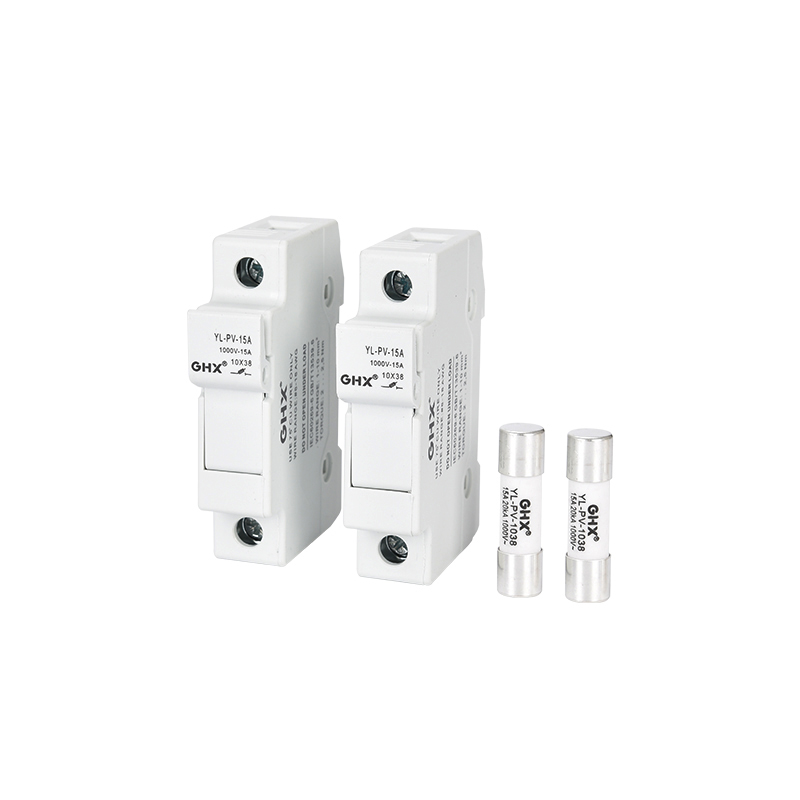Key features and functions of a DC fuse
2023-10-17
A DC fuse, also known as a direct current fuse, is an electrical protection device designed to interrupt the flow of electric current in a direct current (DC) electrical circuit when an excessive current condition, often referred to as an overload or short circuit, is detected. DC fuses are crucial safety components in various applications, including automotive, marine, solar power systems, and industrial DC power distribution, where they protect electrical systems and devices from damage due to overcurrent events.
Here are the key features and functions of a DC fuse:
1. Overcurrent Protection: The primary purpose of a DC fuse is to provide overcurrent protection. When the current in the circuit exceeds the rated current of the fuse, the fuse wire or element inside the fuse melts, causing an open circuit. This action interrupts the flow of current, preventing further damage to the circuit and connected devices.
2. Voltage Rating: DC fuses come in different voltage ratings to match the voltage level of the DC electrical system they are intended to protect. Common voltage ratings include 12V, 24V, 48V, and higher, depending on the application.
3. Current Rating: Fuses are available in various current ratings, typically measured in amperes (A). Users select a fuse with a current rating that matches the expected load current of the circuit. The chosen fuse should be rated slightly higher than the circuit's nominal current to allow for normal inrush currents and variations.
4. Fuse Type: DC fuses are available in different types, including blade fuses, cartridge fuses, and bolted fuses. The choice of fuse type depends on the specific application and mounting requirements.
5. Interrupting Capacity: The interrupting capacity, also known as the breaking capacity, of a fuse specifies the maximum fault current that the fuse can safely interrupt without damaging the fuse itself. It's essential to choose a fuse with an interrupting capacity appropriate for the circuit's potential fault current.
6. Fuse Holder: A fuse holder or fuse block is used to securely hold the fuse and provide electrical connections. Proper fuse holders ensure reliable and safe fuse installation.
7. Fast-Acting or Slow-Blow: DC fuses are available in two main time-delay categories: fast-acting (quick-blow) and slow-blow (time-delay) fuses. Fast-acting fuses open rapidly in response to overcurrent conditions, while slow-blow fuses tolerate brief current surges that occur during normal operation but respond more slowly to sustained overcurrent events.
8. Polarity Sensitivity: Some DC fuses are polarity-sensitive, meaning they are designed for specific polarity configurations (e.g., positive or negative ground systems). It's important to choose a fuse that matches the polarity of your DC system.
Applications of DC fuses include:
- Automotive: DC fuses protect various automotive electrical circuits, including those for lighting, power windows, radios, and other vehicle components.
- Marine: Fuses are used in marine electrical systems to protect boat electronics, lighting, and auxiliary systems.
- Solar Power Systems: DC fuses safeguard photovoltaic arrays, solar inverters, and charge controllers in solar power installations.
- Industrial DC Power Distribution: In industrial settings, DC fuses protect equipment, machinery, and power distribution systems powered by DC sources.
Proper selection and installation of DC fuses are essential for the safe and reliable operation of DC electrical systems. Factors such as voltage rating, current rating, interrupting capacity, and fuse type should be considered when choosing a fuse for a specific application. Additionally, fuses should be installed and replaced by qualified individuals following safety guidelines and manufacturer recommendations.



